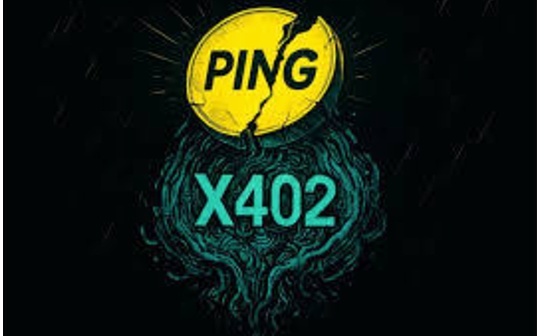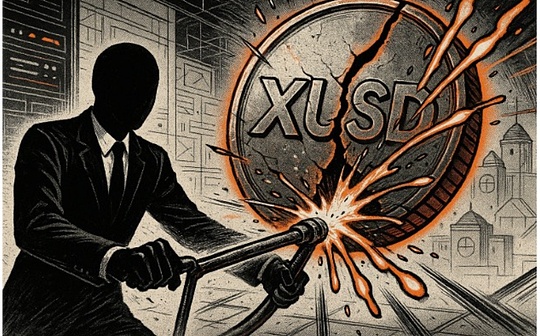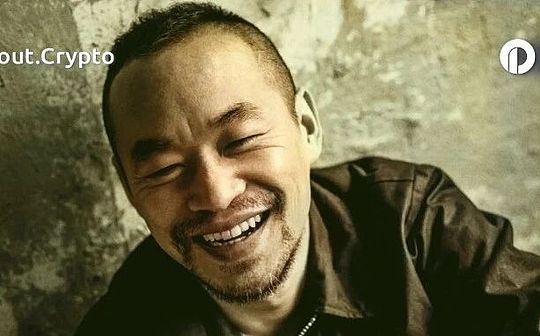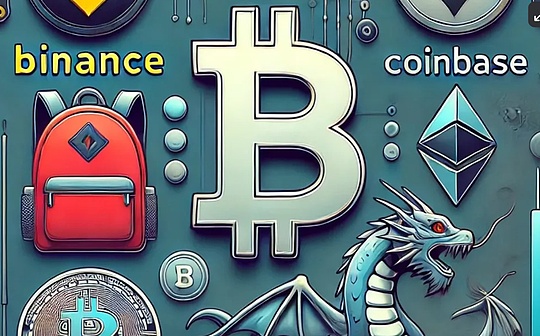
Author: Zhixiong Pan Source: ChainFeeds
In the past week, there have been news of major acquisitions from veteran crypto exchanges Kraken and Coinbase, and the two parties intend to make a big move into the derivatives market: Kraken acquires NinjaTrader for $1.5 billion, while Coinbase negotiates a multi-billion-dollar merger and acquisition of Deribit.The two transactions not only represent the giant’s strong will for the derivatives business, but also reflect the increasingly prominent strategic value of the crypto derivatives market.
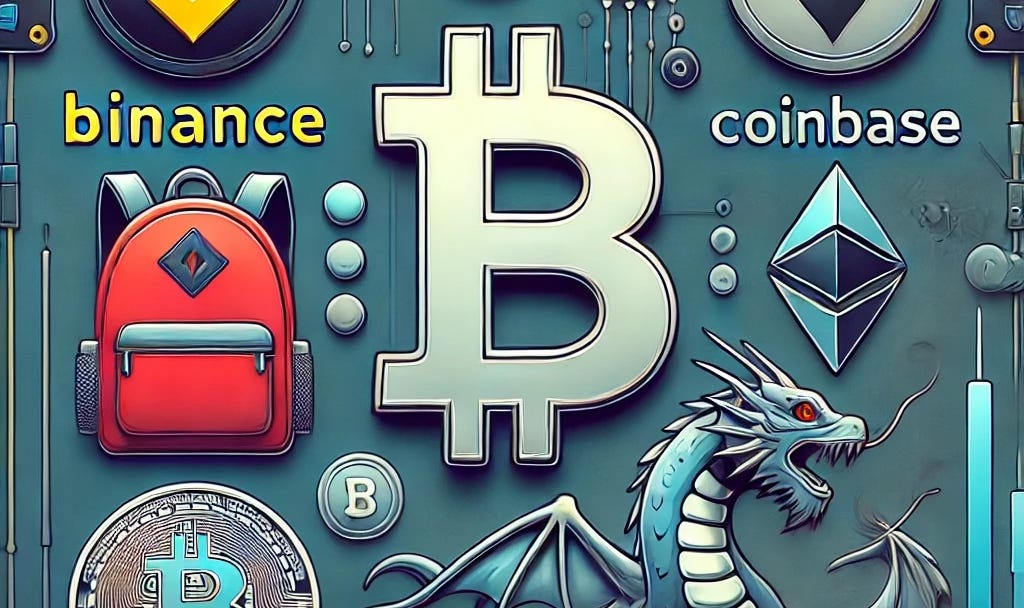
Since the advent of Bitcoin, spot trading has been the main way of interaction for crypto assets.However, with the expansion of market size and diversification of participants, simple trading can no longer meet the complex risk management, investment and speculation needs.Just as derivatives are crucial in price discovery, risk hedging and leveraged trading in traditional financial markets, the cryptocurrency sector also requires derivatives to improve market efficiency, expand capital utilization, and provide diversified strategies for professional traders.In the past decade, the crypto derivatives market has undergone tremendous changes from nothing to something, from edge to mainstream, and its development can be roughly divided into four stages: the start of derivatives brought by OKCoin (v0), the rise of perpetual contracts launched by BitMEX (v1), FTX leads the industry to improve capital utilization (v2), and the interest-generating derivatives pioneered by Backpack (v3).
Every advancement of technology and products brings about the evolution of capital efficiency, transaction experience and risk control mechanisms, and has a profound impact on the industry structure.In parallel with the evolution of centralized exchanges (CEX), the field of decentralized finance (DeFi) derivatives has also risen rapidly. Projects such as dYdX, GMX, Hyperliquid and other projects have carried out various innovations under the on-chain contract model.This article will systematically sort out the development history of these four major stages, and combine the branch evolution of DeFi derivatives to discuss the practical significance and far-reaching impact of product innovation in each stage.By looking back on history, we can also have a clearer insight into the future direction of the crypto derivatives market.
v0 stage (2014-2015): The start of crypto derivatives
Stage characteristics: preliminary transplantation from traditional futures to crypto futures
Prior to 2014, cryptocurrency trading was primarily limited to spot.Bitcoin is volatile, miners and long-term coin holders face the need to hedge risks, and speculators are eager to use leverage to achieve higher returns.In 2014, OKCoin (later renamed OKEx/OKX) took the lead in transplanting the margin system, maturity delivery and clearing mechanism of traditional futures into Bitcoin transactions and launched Bitcoin futures products.This allows coin holders to hedge the risk of future price declines on exchanges and also provides speculators with opportunities for high leverage.Subsequently, exchanges such as Huobi also followed up and launched similar contracts, and crypto derivatives began to appear on the stage of history.
Representative Platform
The v0 stage is typical of the coin standard delivery contracts of OKCoin/OKEx and Huobi: weekly or quarterly delivery, with a fixed expiration date, similar to the traditional commodity futures model.For miners and investors, this is the first risk hedging tool that can be used directly; for speculators, it also means that smaller capital can leverage greater returns.
Market Influence
The fixed expiration date design at that time was not flexible enough in the crypto market with extreme volatility. If the market fluctuates violently, traders will not be able to adjust their positions freely before expiration.In addition, early risk control is incomplete, and cross-position sharing often occurs: once the market fluctuates violently, some leveraged positions will be liquidated and the margin is insufficient, the profits of the profit account will be deducted to fill the gap, which has criticized many users.Nevertheless, the v0 stage lays the foundation for crypto derivatives and accumulates experience for subsequent innovation.
v1 stage (2016-2017): The rise of perpetual contracts and the market explosion
Stage characteristics: Perpetual contract + high leverage = explosive growth
The market needs more flexible and efficient derivatives.In 2016, BitMEX launched the Perpetual Swap contract. The biggest innovation is that there is no expiration date, and the contract price is anchored by the capital rate.In this way, both long and short parties can hold positions in a “never delivery” model, reducing the pressure on futures to move positions when they approach delivery.BitMEX also increased the leverage multiple to 100 times, arousing great interest from traders.During the crypto bull market in 2017, the trading volume of perpetual contracts rose rapidly, and BitMEX once set an astonishing record of single-day trading volume.At this time, Bitcoin perpetual contracts were competing to imitate by the industry and became one of the most popular products in crypto history.
Representative Platform
-
BitMEX: With perpetual contracts, the adoption of insurance funds and forced position reduction mechanisms has greatly reduced the probability of customer profits being shared.
-
Deribit: Launched in 2016, despite limited early trading volume, it provides institutional and professional traders with new derivative strategy options and heralds the rise of the options market.
-
Traditional institutions enter: At the end of 2017, CME and CBOE launched Bitcoin futures, allowing crypto derivatives to gradually enter the regulatory vision.
Market Influence
The emergence of perpetual contracts has led to the explosion of crypto derivatives, and derivative trading volume even surpassed some spot markets in the 2017 bull market, becoming an important place for price discovery.However, the combination of high leverage and high volatility has also brought about a chain reaction of liquidation, and some exchanges have experienced downtime or forced reduction of positions, causing user controversy.This reminds the platform that it is necessary to strengthen technology and risk control while innovating.At the same time, regulators have also begun to pay more attention to highly leveraged crypto derivatives.
v2 stage (2019-2020): Unified margin and multi-asset mortgage
Stage characteristics: From “Is there a new product” to “How to improve capital efficiency”
After the bear market in 2018, derivatives heated up again in 2019, and market demand changed to focusing on trading efficiency, capital utilization and product richness.After FTX was launched in 2019, it was the first to introduce a “unified margin account”: users can use the same margin pool to participate in multiple derivative transactions, and use stablecoins as general margin.Compared with the previous model of separate deposit and cumbersome transfer of each contract, this greatly simplifies operations and improves capital turnover efficiency.FTX has also improved the hierarchical clearing mechanism to alleviate the long-standing “distributed losses” problem.
Representative Platform
-
FTX: With stablecoin settlement and cross-position margin, it has been favored by professional traders; it has launched leveraged tokens, MOVE contracts and many altcoin futures, with a rich product line.
-
Binance, OKEx, and Huobi: They have also upgraded one after another, launching USDT standard perpetual contracts or unified accounts, and the risk control is more mature than the v1 stage.
Market Influence
The v2 stage witnessed the further expansion and mainstreaming of the derivatives market, and the transaction volume continued to rise, and institutional funds also entered the market in large quantities at this time.As the compliance process advances, the transaction volume of traditional financial platforms such as CME has also increased significantly.Although this stage has reduced the problem of liquidation and sharing, in the extreme market of “312” in March 2020, multiple exchanges still experienced pin insertion or temporary downtime, highlighting the importance of upgrading the risk control and matching system.Overall, the biggest feature of the v2 stage is “unified account + stablecoin settlement”, and the rich new products make the crypto derivatives market more mature.
v3 stage (2024~To date): a new era of automatic lending and interest-generating derivatives
Stage characteristics: further improve the utilization rate of funds, and the margin will no longer be “sleepy”
On the basis of a unified margin, there is still a long-term pain point: idle funds in the account usually do not generate returns.In 2024, Backpack proposed the “Auto Lending” and “Interest-Bearing Perpetuals” mechanisms to integrate margin accounts and lending pools.Specifically, idle funds and floating surpluses in the account can be automatically lent to users who need leverage to earn interest; if there is a floating loss, an interest rate will be paid.This allows the exchange to not only be a place to match, but also plays the role of lending and interest management.Coupled with the recently launched points mechanism of Backpack, users are more likely to obtain passive income from multiple risk preferences.
In addition, in March 2025, Coinbase and Kraken, two of the two old exchanges in the United States, also accelerated their derivatives trading.Kraken acquires NinjaTrader for $1.5 billion; Coinbase negotiates the acquisition of Deribit, which may be valued in the range of $4 billion to $5 billion early this year.Large compliant crypto exchanges accelerate their layout of derivatives exchanges, which also means that there are still huge opportunities in the track.
Representative Platform
-
Backpack: Its interest-generating perpetual contract treats unused margin and floating profits as “lending funds”, bringing interest income to holders, and users holding floating loss positions will automatically pay interest to the lending pool.
-
The platform uses dynamic interest rate models to deal with market fluctuations; the floating profits of the position can be partially withdrawn and continue to lend, realizing the “short while long and short while collecting interest.”
-
Backpack plans to support multi-asset collateral and cross-chain assets to further expand capital coverage.
Market Influence
The sustainable mechanism for interest-bearing further improves capital efficiency. If it is successfully implemented, it may become the next round of industry trend.Other exchanges may consider introducing similar features or working with DeFi agreements to provide benefits for margin funds.However, this model has higher requirements for platform risk control and asset management, and requires refined management of lending pool liquidity and control chain risks in extreme market conditions.In addition, compliance and prudent operations are also crucial; if the platform experiences an imbalance in asset management, the risks may be amplified.However, the exploration of the v3 stage undoubtedly brings new forms to the crypto derivatives market, further enhancing the integration of trading and financial functions.
DeFi derivatives branch lines: diversified exploration such as dYdX, GMX, Hyperliquid, etc.
While centralized exchanges (CEXs) are constantly evolving, decentralized derivatives (DeFi) have also formed a parallel development trajectory in recent years.Its core demand is to realize futures, options and other trading functions without trusting intermediaries through smart contracts and blockchain technology.How to provide high throughput, sufficient liquidity and improve risk control under a decentralized architecture has always been the challenge of this track, and has also prompted various projects to diversify their technical design.
dYdX initially provided a hybrid model of order book and on-chain settlement based on Ethereum L2 StarkEx. Later, it completed the migration to the Cosmos ecosystem V4, trying to further improve the degree of decentralization and matching performance on the self-built chain.GMX takes another path, using the automatic market maker (AMM) model, where users trade directly with liquidity pools, and realizes the perpetual contract function in a way that liquidity providers share risks and obtain returns.Hyperliquid establishes a special high-performance blockchain to support order book matching, putting matchmaking and liquidation on the chain, trying to combine CEX-level speed and decentralized transparency.
These decentralized platforms attract some users who favor self-custodial due to tighter regulation or asset security considerations.However, overall, the transaction scale of DeFi derivatives is still far smaller than CEX, mainly limited by liquidity and ecological maturity.With the improvement of technology and more funds entering the market, if decentralized derivatives can balance performance and compliance, they may be deeply complementary with CEX, further enriching the overall structure of the crypto market.
The integration of CEX and DeFi and future prospects
Looking back at the journey of crypto derivatives from v0 to v3, each stage revolves around technological innovation and efficiency improvement:
-
v0: Copy the traditional futures framework to encryption, but the flexibility and risk control are relatively preliminary;
-
v1: The birth of BitMEX perpetual contract greatly improves liquidity and heat, and derivatives begin to dominate price discovery;
-
v2: Unified margin, multi-asset mortgage and diversified products further improve the efficiency and professionalism of capital use;
-
v3: Backpack integrates lending and interest generation functions into the exchange to try to maximize capital efficiency.
The parallel DeFi derivatives track is also exploring feasible paths for decentralized transactions through various solutions such as order books, AMMs, dedicated chains, etc., providing self-custodial and trustless options.
Looking ahead, the development of crypto derivatives may show several major trends:
-
The integration of centralization and decentralization: CEX is more transparent or launches on-chain derivatives, and DEX improves matching speed and liquidity.
-
Risk Management and Compliance: The larger the transaction scale, the higher the requirements for risk control, insurance funds, dynamic liquidation and regulatory compliance.
-
Market size and product diversification: More asset classes and more complex structural products will emerge, and derivatives may further exceed spot trading volume.
-
Continuous innovation: Automatic interest generation mechanisms like Backpack, volatility derivatives, and even AI-combined forecast contracts have opportunities to appear. Whoever can take the lead in making products that meet the needs will stand out in the new round of competition.
In short, the crypto derivatives market is gradually maturing and diversifying.Through innovations at the technology, model and compliance levels, it will better meet the diversified needs of institutions and retail investors, and become an important sector with more dynamic and potential in the global financial system.

